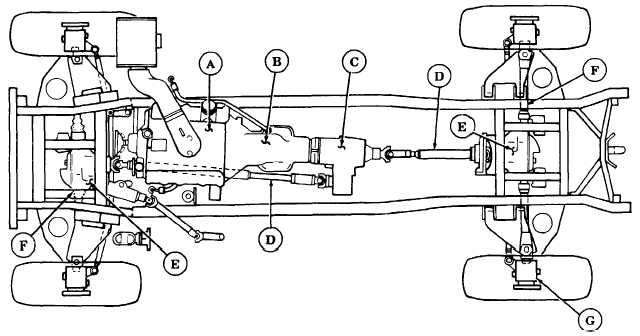TM 9-2320-280-20-1
1-18. DRIVETRAIN OPERATION
The drivetrain is identical for all models covered in this manual. It converts horsepower into mechanical
force to move the vehicle. Major components of the drivetrain are:
ENGINE - The water-cooled 6.2 liter, V-8, Diesel engine provides up to 150 horsepower at 3600 rpm to
power the vehicle. The 6.5 liter V-8 engine develops approximately 160 horsepower at 3400 rpm to
power the vehicle. The engines are essentially the same on all models except those equipped with deep
water fording kit installed, which adds a specially sealed dipstick, dipstick tube, and vented CDR valve.
These differences do not affect engine performance.
TRANSMISSION (3L80) - Adapts engine power to meet different driving conditions. The automatic
transmission has three forward speeds, a reverse and a neutral. A neutral safety switch prevents the
vehicle from being started with the transmission in any selector lever position except neutral.
TRANSMISSION (4L80E) - Adapts engine power to meet different driving conditions. The
automotic transmission has four forward speeds, a reverse, a neutral and a park. A neutral safety
switch prevents the vehicle from being started with the transmission in any selector lever position
except park and neutral.
TRANSFER CASE - Directs engine-to-transmission power to front and rear differentials
simultaneously. This condition means the vehicle is always in four-wheel drive. The transfer case
allows for selection of three drive ranges and a neutral position. A complete description of these
driving ranges and the recommended driving conditions during which they are used can be found in
TM 9-2320-280-10.
PROPELLER SHAFTS - Link transfer case to differentials. Universal joints, located at either end
of the front and rear propeller shafts, permit inline driving power between the transfer case and
differentials even though they are mounted at different angles.
DIFFERENTIALS - Transmit driving power, via halfshafts and geared hubs, to left and right
wheels. The differential ensures power is applied to the wheel having traction, regardless of which
wheel is slipping. This feature is called torque biasing.
HALFSHAFTS - Transmits power from differentials to geared hubs.
GEARED HUBS - Serve as the front wheel steering spindle and act as the final drive components
to front and rear wheels.
1-36

